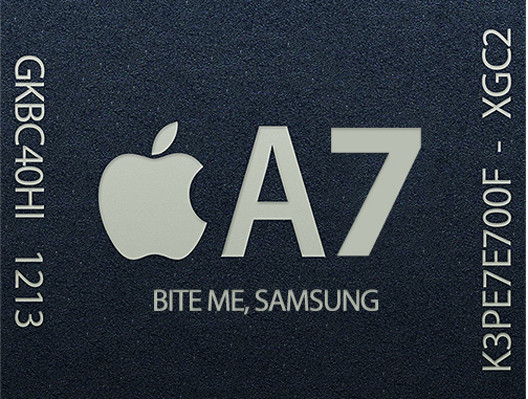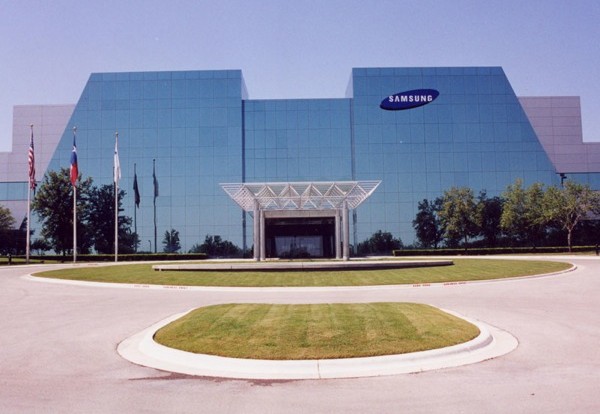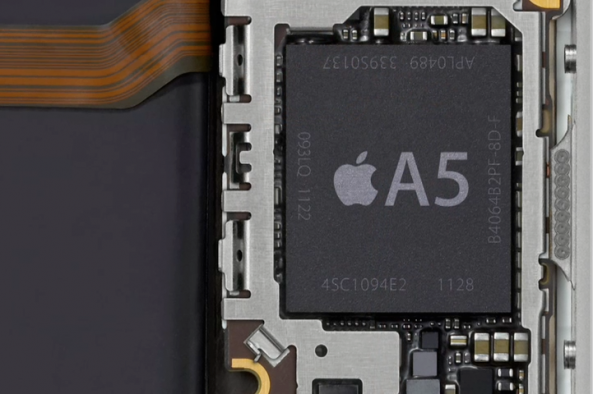We’ve been hearing lots of rumors claiming that Apple is taking its lucrative chip biz contract away from Samsung in the final sign that the partnership between the two firms on parts has all but fallen apart. What’s really interesting this time around is that a Korean publication that typically favors Samsung now claims that Apple has excluded Samsung entirely from its next-generation chip development project.
That’s a major development knowing Apple’s been paying billions of dollars to the Galaxy maker’s semiconductor arm to manufacture iDevice processor, using Apple-designed silicon blueprints…
Today, an executive at one of Samsung’s local partners in Korea told The Korea Times by phone:
Apple is sharing confidential data for its next A7 system-on-chip (SoC) with the Taiwan Semiconductor Manufacturing Company.
TSMC has begun ordering its contractors to supply equipment to produce Apple’s next processors using a finer 20-nanometer level processing technology.
An official of another top-tier parts supplier to the Korean company told the paper:
Apple is cutting the use of Samsung displays for its products. Now the deterioration of ties has expanded to chips. You should remember that the application business is one of Samsung’s new growth engines in which the firm is heavily investing.
The report goes on to note that Samsung could stop some of its chip-manufacturing lines should it fail to win Apple orders for A7 chips. The Galaxy maker is apparently now dedicating more resources toward satisfying Nvidia’s “stiffer requirements” for graphic chips on a contract basis to “minimize the impact.”
A report Monday by Financial News, South Korea’s daily newspaper, appears to corroborate The Korea Times story. According to that paper, Samsung Electronics reportedly plans to resume its investment in the line-17 system semiconductor plant located in Hwaseong, Gyeonggi Province, within April.
Samsung had halted the investment in expanding that facilities about five months ago, most likely due to Apple’s preparation to procure system semiconductors from companies other than Samsung, the report has it.
“The company may have decided to resume the investment in order to prepare for its rebounding semiconductor sales,” according to a human-translated version of the story.
Global semiconductor material market shrunk two percent year on year in 2012, according to iNews.
Last month, it was reported that Taiwan Semiconductor Manufacturing Company (TSMC), the world’s leading independent semiconductor foundry, finalized production designs for Apple’s in-house engineered A7 processor.
Samsung’s multi-billion dollar semiconductor plant in Austin, Texas so far has been dedicated exclusively to fabbing Apple chips. That might change beginning with 2014.
Risk production will apparently start this summer and TSMC should be able to churn out the A7 chips in volume in early-2014, in time for a 2014 wave of iPhone, iPad and iPod upgrades. The Apple-designed processor is expected to be fabbed on TSMC’s sophisticated 20-nanometer process technology.
Shortly after, a Seoul-based broadcasting unit of Money Today, followed up by citing an unnamed Samsung Electronics official who said his firm didn’t receive an order for 20-nanometer chips from Apple for the next year’s iPhone upgrade. As a result, internal tension inside Samsung is rising.
Note these reports insist on referring to Apple’s 2014 mobile processor as the A7.
This could mean two things: either the engine powering the upcoming iPhone 5S, a rumored budget iPhone and possibly new iPads will be branded as an A6 variant to indicate a specs update rather than a major architectural refresh, or Asian media got it wrong.
With the release of the iPhone 5 in September 2012, Apple debuted the then brand new A6 chip which claims a twofold CPU and GPU increase over the previous generation. At the same time, the fourth-generation iPad debuted a month later with the A6X variant incorporating speedier quad-core graphics.
With twice the GPU oomph of the iPad 3’s A5X chip, the A6X silicon really shines in graphics-intensive applications, making 60 FPS action and high-resolution Retina textures in games a reality.


